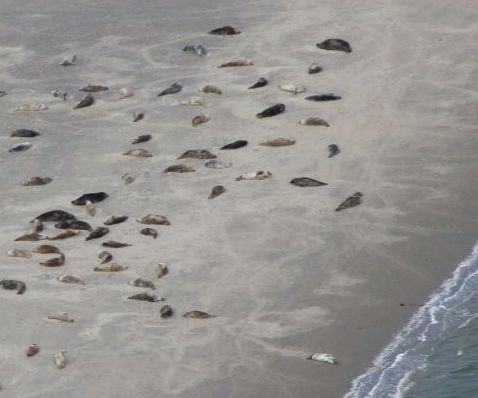
| Project data | |
|---|---|
| Project leader: | Prof. Prof. h. c. Dr. Ursula Siebert |
| Chief scientist: | Dr. Dominik Nachtsheim |
| Scientific staff: | Dr. Isabel Avila, Dr. Anita Gilles |
| Project term: | 01.12.23-31.12.24 |
| Sponsorship: | National Park Administration "Lower Saxony Wadden Sea", Wilhelmshaven |
Project description
The Institute of Terrestrial and Aquatic Wildlife Research (ITAW) of the University of Veterinary Medicine Hannover Foundation has been conducting research in the field of marine mammals for various federal and state authorities for many years. In addition to basic and applied research, a core focus of our work is the assessment of marine mammal populations in German waters and beyond.

This includes, for instance, the visual monitoring of harbour porpoises (Phocoena phocoena) in the German Exclusive Economic Zone (EEZ) since 2002 as well as image-based counts of grey seals (Halichoerus grypus) in the Wadden Sea of Lower Saxony since 2012.Furthermore, ITAW regularly conducts model-based analyses of temporal-spatial habitat selection and habitat use of marine mammals.
In this project, the Wadden Sea National Park Authority of Lower Saxony provides data and ITAW conducts a temporal-spatial analysis of the population development and habitat use of grey and harbour seals (Phoca vitulina) in the Wadden Sea of Lower Saxony, with a special focus on the following research questions:
o What factors influence the habitat selection (i.e. choice of resting places) of harbour and grey seals in the Lower Saxony Wadden Sea National Park during the pupping season and during the moulting season?
o Has the fine-scale, spatial distribution of seal haul-out sites in general and pupping areas in particular in the Wadden Sea of Lower Saxony changed over time, e.g. over the last 10 years and in comparison to the greater Wadden Sea area? What role does the management zonation into resting, intermediate and recovery zones play and can possible changes in the distribution pattern be attributed to anthropogenic disturbances?
o What is the demography and population structure, in particular the temporal development of the proportion of pups over the last 10 years?
The results from this projects will directly be transferred to the management authority and may lead to proposals for improved species protection for harbour and grey seals in the Wadden Sea National Park.
Contact person
Stiftung Tierärztliche Hochschule Hannover
Institute for Terrestrial and Aquatic Wildlife Research
Werftstr. 6
25761 Büsum
Dr. Dominik Nachtsheim
Phone: +49 (0)511-8568159
e-mail schreiben


